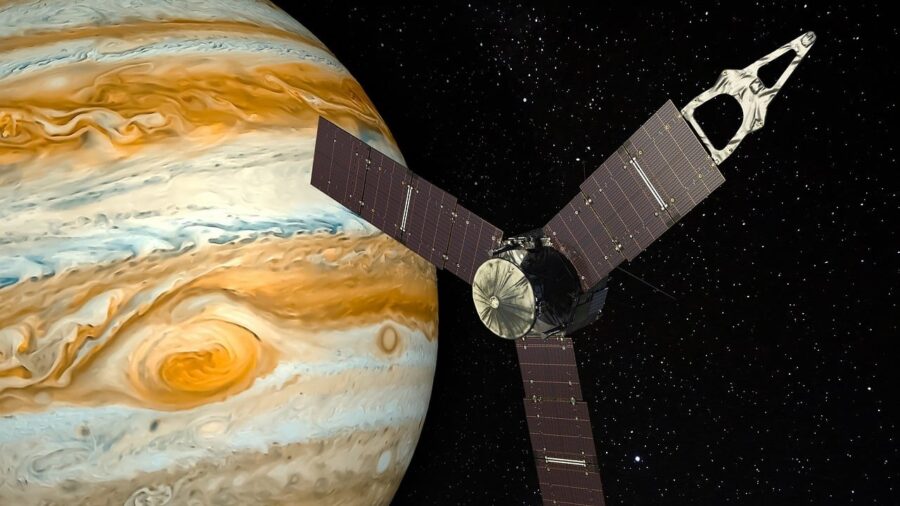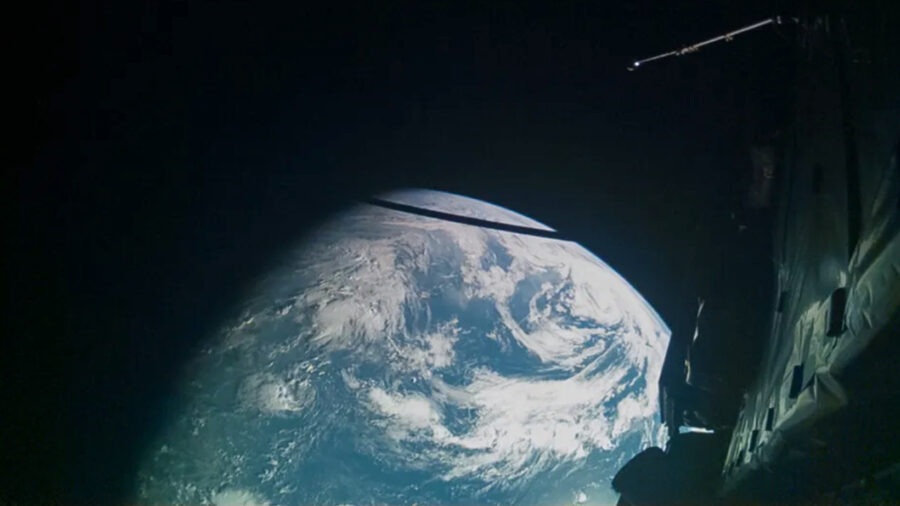
The European Space Agency just posted footage from the JUICE Jupiter probe’s lunar-Earth flyby, and the images are stunning, to say the least. The video stitches together the images from the flyby and gives us an incredible perspective of the Moon before showing the probe’s view of our planet. It’s definitely an awe-inspiring look at both worlds that we normally don’t get to see such clear images of.
The Jupiter probe performed the flyby on August 19 and 20 and used the gravity of both the Moon and Earth to launch itself further out into our solar system, currently making its way toward Venus before eventually entering the Jovian system. This is the first double world flyby attempted and it was a great success. Ignacio Tanco, spacecraft operations manager for the craft, said in a statement, “The gravity assist flyby was flawless, everything went without a hitch, and we were thrilled to see JUICE coming back so close to Earth.”
The Jupiter probe has already been on its journey for over a year now, as it launched in April 2023 from Europe’s Spaceport in French Guiana.
The Jupiter probe is dubbed the Jupiter Icy Moons Explorer, or JUICE for short. When it made the daring flyby maneuver, its two cameras were able to capture the incredible footage we see in the video. The monitoring cameras are primarily there to keep an eye on the booms and antennas of the probe, but these images are a nice bonus to those watching at home.
The next leg of the Jupiter probe’s journey is expected to last about a year, as it is projected to reach Venus in August 2025 and then head back to Earth.
While the Jupiter probe did its flyby, the mission team was also able to test its scientific instruments and reported that ten of the instruments switched on while it was performing the lunar flyby and eight when it performed the Earth flyby. Claire Vallat, JUICE operations scientist, explained that the double flyby allowed the team to “thoroughly study the behavior of Juice’s instruments,” and that the team can use that data to prepare the instruments for its Jupiter arrival. Vallat explained, “given how well we know the physical properties of Earth, the Moon, and the surrounding space environment, it’s also the ideal location to understand how the instruments respond to a real target.”

The Jupiter probe has already been on its journey for over a year now, as it launched in April 2023 from Europe’s Spaceport in French Guiana. The craft is on a mission, as its name implies, to study the icy Jupiter moons Europe, Ganymede, and Callisto for signs of habitability. Despite already being on its journey for over a year, the probe still has a long way to go before it reaches its final destination.
In fact, the Jupiter probe isn’t expected to reach the orbit of our solar system’s biggest planet until 2031. This is its first flyby by Earth, but it won’t be its last. This time, JUICE used the gravity of the Moon and Earth to change its speed and trajectory.
The craft is on a mission, as its name implies, to study the icy Jupiter moons Europe, Ganymede, and Callisto for signs of habitability.
The Moon flyby allowed it to increase speed by 0.5 miles per second and then Earth reduced its speed by 2.9 miles per second to help guide it on its journey toward Venus. The next leg of the Jupiter probe’s journey is expected to last about a year, as it is projected to reach Venus in August 2025 and then head back to Earth. Once it returns, it will make two additional flybys around Earth in September 2026 and January 2029 before it eventually makes the long trip to Jupiter and reaches the planet in 2031.
Content Disclaimer and Copyright Notice
Content Disclaimer
The content provided on this website is sourced from various RSS feeds and other publicly available sources. We strive to ensure the accuracy and reliability of the information, and we always provide source links to the original content. However, we are not responsible for the content’s accuracy or any changes made to the original sources after the information is aggregated on our site.
Fair Use and Copyright Notice
This website may contain copyrighted material, the use of which has not always been specifically authorized by the copyright owner. We believe this constitutes a “fair use” of any such copyrighted material as provided for in section 107 of the US Copyright Law.
In accordance with Title 17 U.S.C. Section 107, the material on this site is distributed without profit to those who have expressed a prior interest in receiving the included information for research and educational purposes. If you wish to use copyrighted material from this site for purposes of your own that go beyond fair use, you must obtain permission from the copyright owner.



